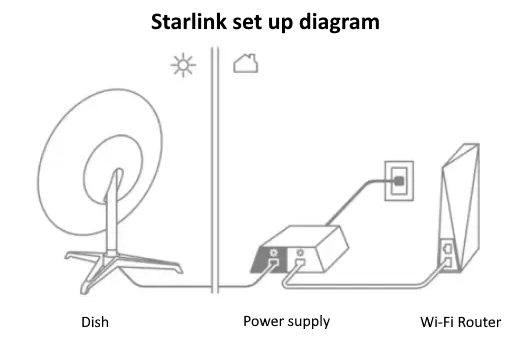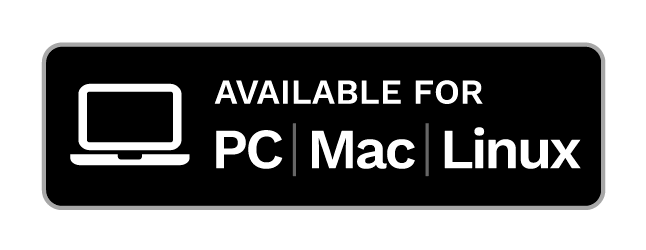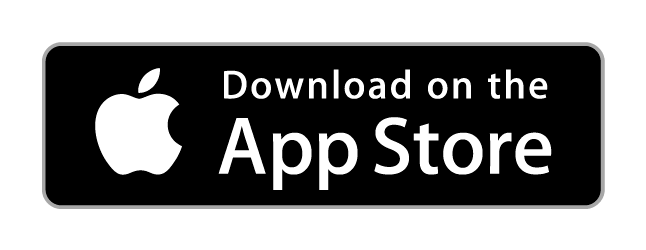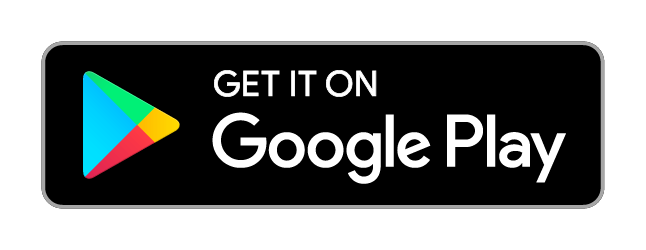How to Get a Fast and Reliable Starlink Internet Connection

What Is Starlink? What You Have to Know
There are very few people in today's world who haven't heard of Elon Musk. One of the charismatic entrepreneur's companies is called Starlink - a division of his SpaceX enterprise. The goal of Starlink is to create a constellation of low orbiting satellites to cover the Earth and provide Internet services. So, in a nutshell, you could say that Starlink is a satellite Internet system.
Starlink's aim is to sell high-speed, low latency broadband Internet access to those who need it. This includes, but is not limited to:
- remote and rural areas - a definite improvement if we think of the current speeds available to people living in these areas - see here some stats from the US.
- vehicles moving in the air, on ground and on sea - airplanes, trains, trucks, cargo ships, etc.
Being a satellite Internet service provider, Starlink is technically similar to others such as HughesNet or Viasat. In order to get access to the Internet, you have to buy and set up a small satellite dish at your home. The satellite signal gets passed to the router (included in the setup kit) to which you will connect your devices: computers, smartphones, tablets, etc.

How Starlink Internet Works
The satellite Internet system being rolled out by Starlink is comprised of three main elements:
- satellites - planned to be deployed over 42,000 in the next few decades.
- dedicated ground stations (relays), which are linked between them through optical fiber connections
- user terminals.
The data being sent and received over the Internet by Starlink users goes through all these elements. The goal is to have a connection with the lowest possible latency and the highest available bandwidth. So - the more satellites deployed in the constellation, the better, as they will be able to communicate directly between them as an alternative to using the ground stations.
Current status as of March 2021:
- Starlink deployed more than 1,300 satellites into orbit.
- Territories where availability has been expanded include parts of North America, Europe and Australia
- This article from Tom's Guide shares some interesting stats on Starlink.
Here's a video that technically explains the current Starlink deployment status and how it's eventually planned to work:
Once a critical mass of the constellation is deployed, according to the initial project, satellites will be able to communicate between them directly using lasers, thus needing fewer dedicated ground relays. This is very important for minimizing the latency of the Starlink Internet connection and maximizing the speeds. As you know, one of the pitfalls of satellite Internet connections has always been high latency times.
Starlink Coverage Map
If you're interested in seeing the coverage by Starlink satellites (not the actual Internet service provided!), check out https://satellitemap.space/ or https://orbitalindex.com/feature/starlink-coverage/.
At the moment, Starlink Internet service is used by more than 10,000 beta testers and is available to order or preorder in parts of the following countries:
- USA
- Canada
- United Kingdom
- Germany
- Portugal
- New Zealand
- Australia
According to CNBC, the company is looking to widely expand Starlink access internationally, with public records showing the company registered in Austria, Australia, Argentina, Brazil, France, Chile, Colombia, Germany, Greece, Ireland, Italy, Mexico, the Netherlands, New Zealand, the Philippines, South Africa and Spain.
Starlink Internet Speed
What are some Internet speeds you can expect when using the Starlink service? According to the official website, "during beta, users can expect to see data speeds vary from 50 Mbps to 150 Mbps and latency from 20 ms to 40 ms in most locations over the next several months as we enhance the Starlink system." But it's not only the Internet speed that's important - reliability is key as well. And they do state that "there will also be brief periods of no connectivity at all."
Current Starlink speeds and latencies: users on Reddit reported speeds of up to 333 Mbps download, 38 Mbps upload with 27 ms latency.
Expected speeds and latencies according to SpaceX, via AndroidAuthority: 1 Gbps download, 25-35 ms latency.
As suggested, data speed, latency and uptime will improve once more satellites and ground stations will be added to the system.
When Will Starlink Launch and What's the Cost?
There is no official set date for a Starlink launch in any territory as of March 2021. But following coverage focus for territories, the first areas to see the launch will probably be the USA and Canada. You can stay up to date with the latest news by following SpaceX on Twitter.
The cost, however, is available. The service costs $99 per month, plus taxes and fees. You also have to put down an initial payment of $499 for the mountable satellite dish and router that you'll need to install at home.
In terms of deliveries, Starlink claims it's taking orders from customers on a first-come, first-served basis. They're also saying some preorders could take as long as six months to fulfill.
Is Starlink the Right Choice for Me? Can I Live Stream or Play Online Games?
If you live in a city or suburb, it's probably not. And that's because you most likely have faster and more cost effective alternatives, starting from cable to fiber optic connections.
But if you're in a remote area with poor coverage from broadband Internet, then you should definitely consider Starlink. You should also take into account Starlink if you're a digital nomad, always on the move, RV-ing around the country.
And don't worry about bandwidth intensive and latency sensitive activities, such as live streaming or gaming. There are plenty of users doing that while running on Starlink Internet. Here's just an example:
Of course, you should consider also the possibility of a Starlink Internet outage, as mentioned specifically on their website. So, if you get into such activities, be prepared - read below.
Why Could Things Go Wrong with Starlink? How to Solve Internet Issues
We all know the symptoms for connectivity problems. It all starts with slower Internet speeds. Then, it can become unreliable, disconnecting randomly. This is best seen when streaming video or live streaming to your audience - the video will start stuttering, then it goes into "buffering mode". The last stage is disconnecting altogether.
Before we dig into the potential causes and solutions - we are assuming that current Starlink users are situated within coverage of the satellite constellation. Here are some potential causes for Starlink connection issues, together with some suggested solutions:
|
Potential Cause |
Solution |
|
Improper setup of the user’s antenna / receiver |
>> Set up your Starlink Internet connection according to the installation instructions in your kit >> If your Starlink is not the tallest object in sight at the install location, download the Starlink app to ensure you will have a clear field of view before you install. This is important as even small obstructions (single tree, pole, etc.) can interrupt your service. |
|
Starlink is down or is experiencing issues |
>> Check if there are any reported outages. Make sure you follow SpaceX on social for latest updates. |
|
Bad weather - storm, rain, cloudy skies |
>> Use your backup Internet connection until conditions are better |
|
Faulty router / modem / device |
>> Restart your router / modem / device >> Make sure you’re connected to the right hotspot / Internet connection |
It's always a good idea to have a second connection available, in case you have any Starlink connection issues. This can be the cellular data on your smartphone or external USB dongle, a nearby public Wi-Fi connection or any type of connection you might have around.
The problem with using a backup connection is that you'll break your current session. Even if you keep the second connection active on your computer or smartphone, that device will not use both Starlink and the backup connection together at once. If you're doing a bandwidth intensive latency sensitive activity such as live streaming video or gaming, you can kiss that session goodbye. You'll have to reconnect using your backup Internet. And then, when Starlink is working, reconnect to it again.
We've got a solution for this too: using a link aggregation / channel bonding VPN like Speedify.
Conclusion: Use Starlink If Better than Your Current ISP, with Backup Connection for Protection
As mentioned earlier, Starlink is a great solution for those in remote and rural areas. As the deployment of all their 12,000 satellites into orbit advances, the speed, latency and reliability of the system will greatly improve.
But until then - and even after, given there might be network congestion issues in certain areas - it's best you have a secondary backup connection hooked up. This can be your tethered phone or even a cheap DSL / cable connection, if you get any of those. It will save you from those unwanted moments when your main Starlink Internet will be slow or unreliable.
Using Speedify to combine your Starlink Internet with a secondary / backup connection is the best idea for fast, uninterrupted Internet. Here's how it works:
- Speedify uses channel bonding technology to combine 2 or more Internet connections together at once.
- It creates a "super-pipe" out of the Starlink and backup connection. This will maintain the session when one of the component connections fails. Do not confuse this with switching between connections - it's much more than that.
- If the Starlink connection fails or is slower, Speedify will automatically direct more or all traffic to your secondary / backup connection so you get the best speed and stay online.
- Speedify automatically recognizes streaming activities and prioritizes them over other types of traffic.
You can even use Speedify with Starlink alone, without any secondary connection. That's because it includes strong error correction algorithms that will optimize your Starlink connection by minimizing its packet loss rate.
As a bonding VPN, all your traffic will be secured by Speedify's advanced encryption. This will protect your online privacy and sensitive data from hackers and cyber criminals.
Download Speedify
Speedify is the only app that combines your wifi, cellular, wired, and even your friend’s phone signals – into one ultra-fast and super secure link that keeps you all connected for the best possible live streaming, video calling, or just posting to your favorite app.
Subscribe to Speedify on YouTube
Get news, success stories, and our weekly livestreaming show Speedify LIVE! Tune in to chat and ask questions or to yell at us if that makes you happy. We're from Philly, we can take it.




